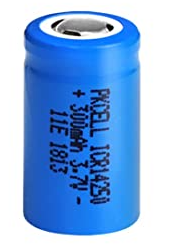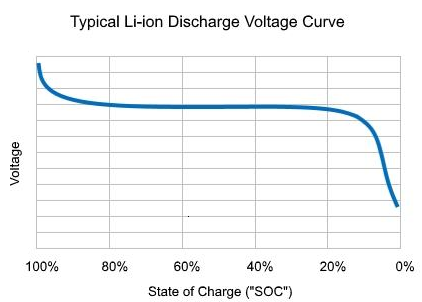What is the State of Charge (SOC) Estimation of a Lithium Ion Battery?

In this article, we explain what the state of charge (SOC) estimation of a lithium ion battery is and the various methods that can be used to estimate the state of charge.
The state of charge is one of the most important concepts of battery management systems.
The state of charge allows us to calculate through estimation how much battery life remains in a battery system for a device in terms of percentage of life left.
The state of charge is the amount of charge remaining in a battery.
Calculating the state of charge of a lithium ion battery system is somewhat complex to get an
accurate estimation. This is because the voltage graph of a charge/discharge cycle of a lithium ion battery is
largely flat along most of the cycle, especially from when the battery has a 10% to 80% charge.

The above graph has voltage as the y axis and charge percentage as the x-axis. You can see for a large part of the curve, from about 10% to 80%, the voltage is relatively the same. This complicates the process of estimating the SOC beccause the voltage does not vary for a large part of the cycle.
So, in order to estimate the battery life left, we need to use some complex algorithms to determine the precise charge remaining.
There are various methods that we can use to estimate the state of charge of a lithium ion battery.
Below is a table which shows various methods that can be used for state of charge estimation.
| Method | Complexity Level | Accuracy of Estimation |
| Voltage Translation | Easy | Least |
| Coloumb Counting | Medium | Good |
| Kalman Filters | Difficult | Better |
| Particle Filters | Highly Complex | Best |
So we can see in the table below that there are various methods to estimate the state of charge of a lithium ion battery system.
Voltage translation is the least accurate method to do so, because as the lithium ion charge-discharge voltage cycle shows, the voltage is largely flat for a large region of the cycle; therefore, it does not give an accurate SOC.
The voltage translation method is the simplest form of estimating the state of charge of a lithium ion battery. The state of charge is directly translated from the measure voltage level of the battery. The measured is not the acutal open circuit voltage of the battery. So, this method is highly accurate.
The Coulomb counting method counts the charge of the battery through current sensing, measuring how much current is flowing into the battery and how much current is flowing out of the battery. Current is continuously monitored. Most all low-cost electronic products use the Coulomb counting method, as it is less expensive than the other more precise methods of Kalman filters and Particle filters.
Kalman filters and Particle filters are advanced algorithms employed that give even greater accuracy
than Coulomb counting.
Related Resources
